
Portugal
Portugal
From the bustling city of Lisbon to the wineries of Porto to the beaches of the Algarve, there are so many options when it comes to exploring Portugal. I’ve visited three times, each time discovering new gems of this lively Iberian country. Exploring the country is easy, either by train or short flights, though car rentals are also a great option for exploring outside the major cities. The peak summer season is known for soaring temperatures and large crowds, though the spring and fall also provide warm to milder days and fewer tourists. In winter, the Mediterranean climate brings cool, wet weather, though the temperature rarely falls much below 50°F.







Portugal Highlight #1
Explore the sea caves by kayak
The Benagil sea caves are one of the most photographed locations in Portugal. The limestone cliffs have given way to create a series of arches and caves, with the centerpiece being a stunning cave with a circular opening overhead.
The caves are only accessible by water, and there are a number of local operators selling boat, kayak, and paddleboard tours. We chose an 8:30 am kayak tour hosted by Secret Algarve with a small group of about 20 people on 2-person kayaks. We specifically chose the first tour of the day so we would experience the caves and surrounding waters with as few fellow tourists as possible. By the time our tour ended at 11:30 am, the shoreline was dotted with kayakers and boats waiting their turn to enter the caves.
Our kayak tour departed from the narrow Benagil beach, just a short paddle from the central cave, though larger boats depart from other locations along the Algarve coast. Note: the waters do get choppy, particularly as more boats join the water, so if you’re prone to motion sickness, come prepared! It’s also worth noting that some of the caves are too narrow to enter on a larger boat, and you’re not always allowed to disembark the boat on the caves’ shores, so check what your tour allows before booking.
Our experience lasted around 3 hours and was overall a low-intensity paddle, allowing for most fitness levels to join in. We explored the cave shores for around 30 minutes and then followed our guide through a series of arches and paddle-through caves for the remaining time. We followed the coastline down to the stunning Praia da Marinha, named one of the 50 Best Beaches in the World, and later retraced our path on land to access the sandy shores.
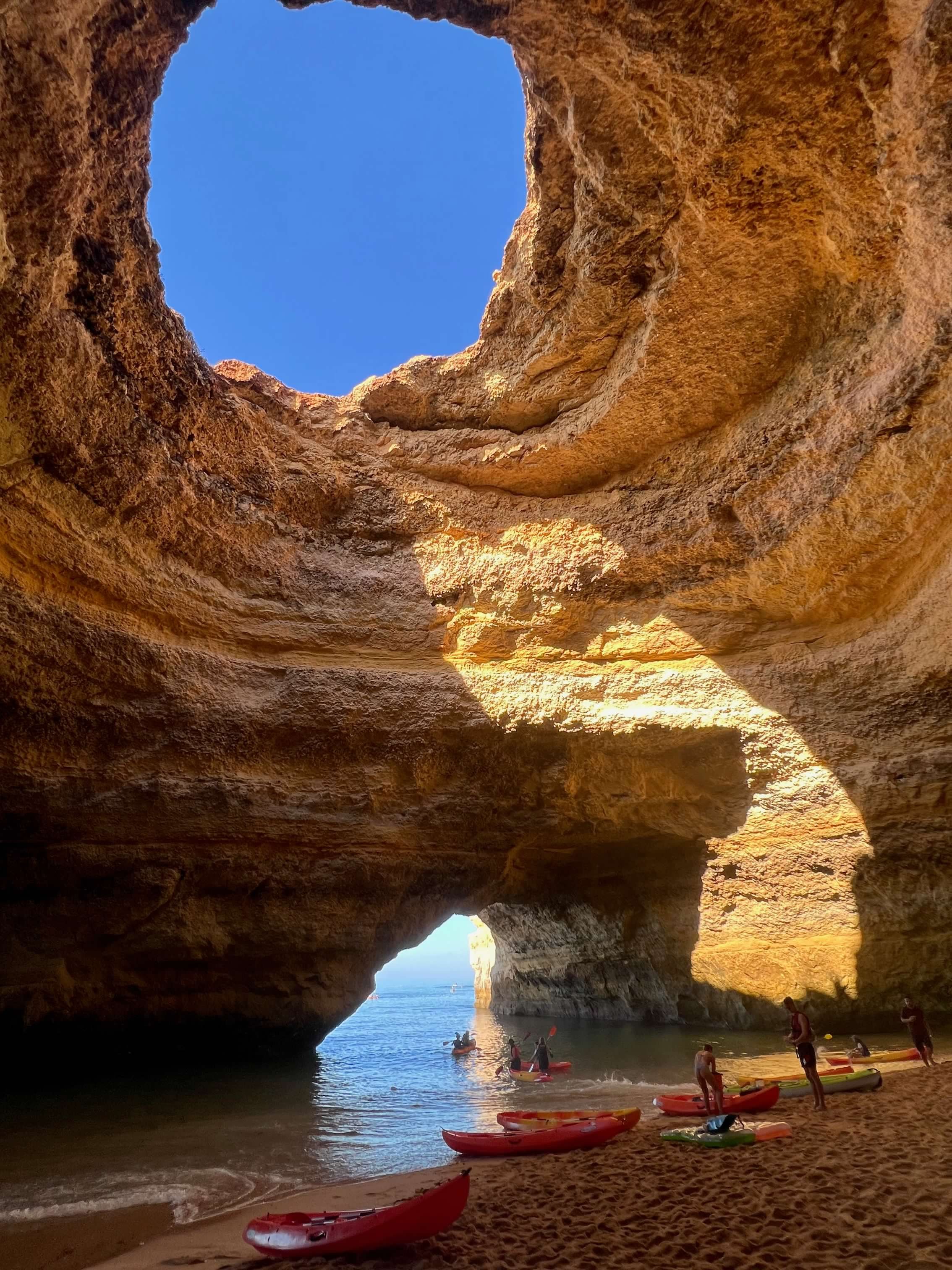
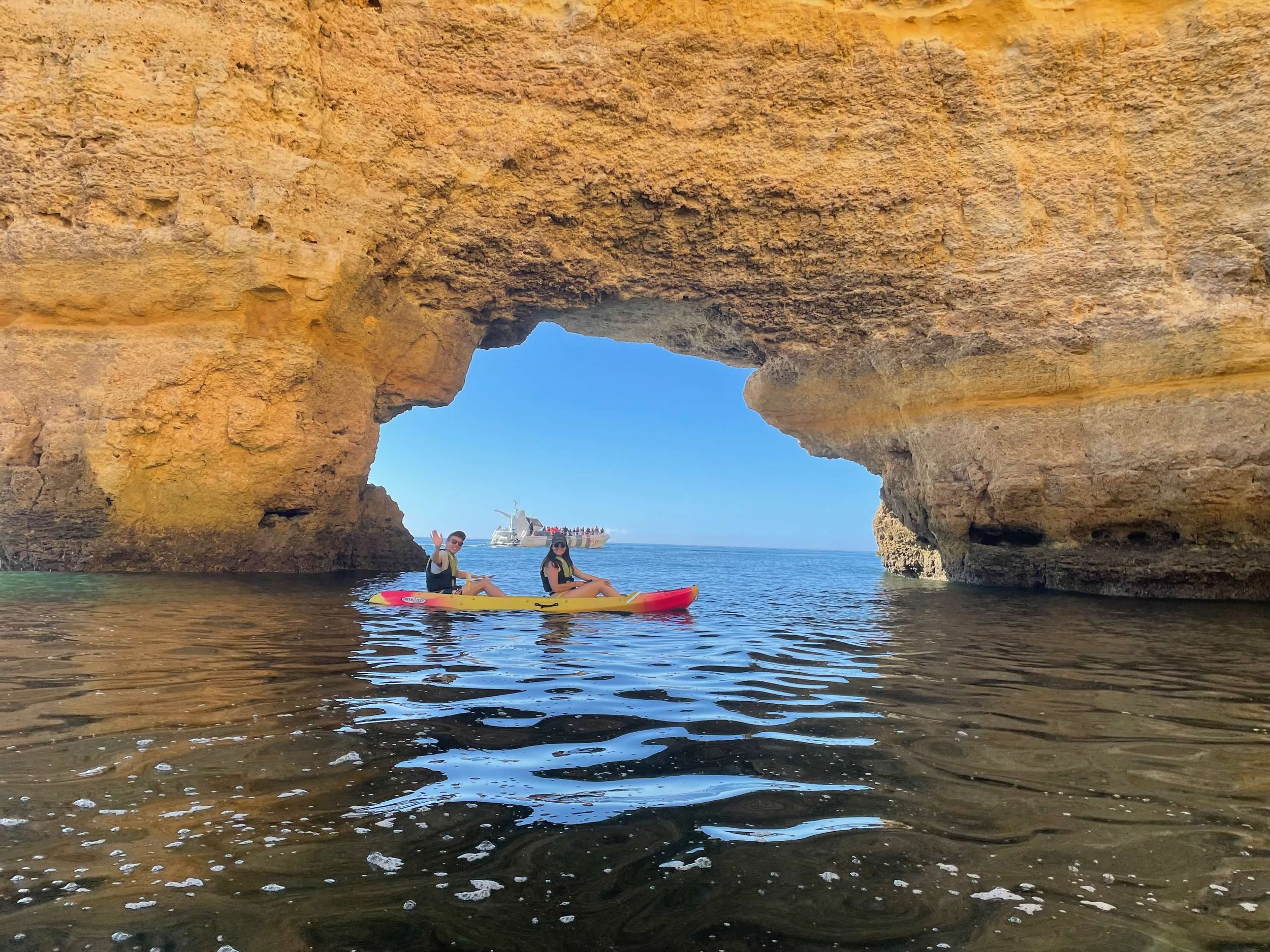
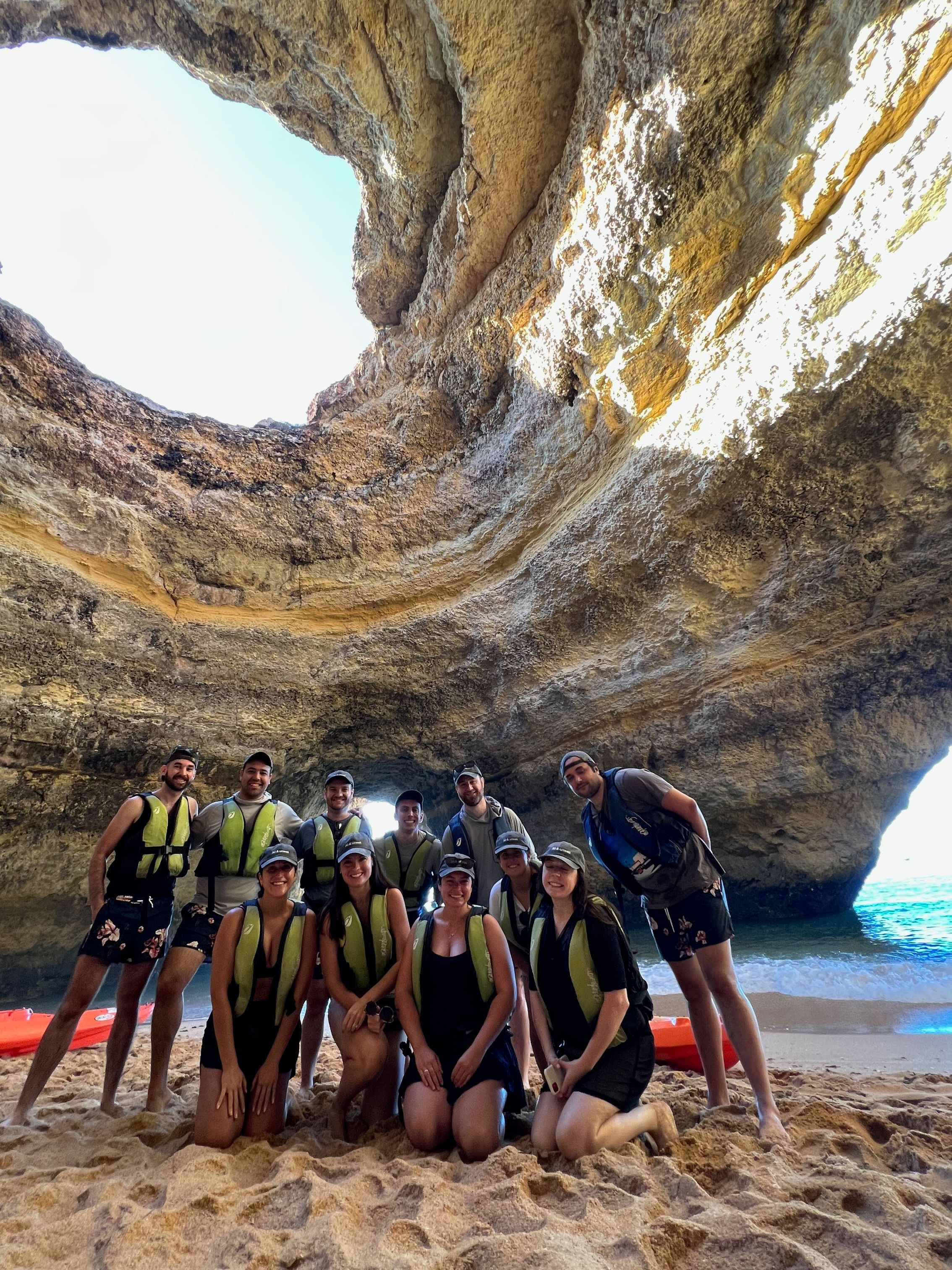
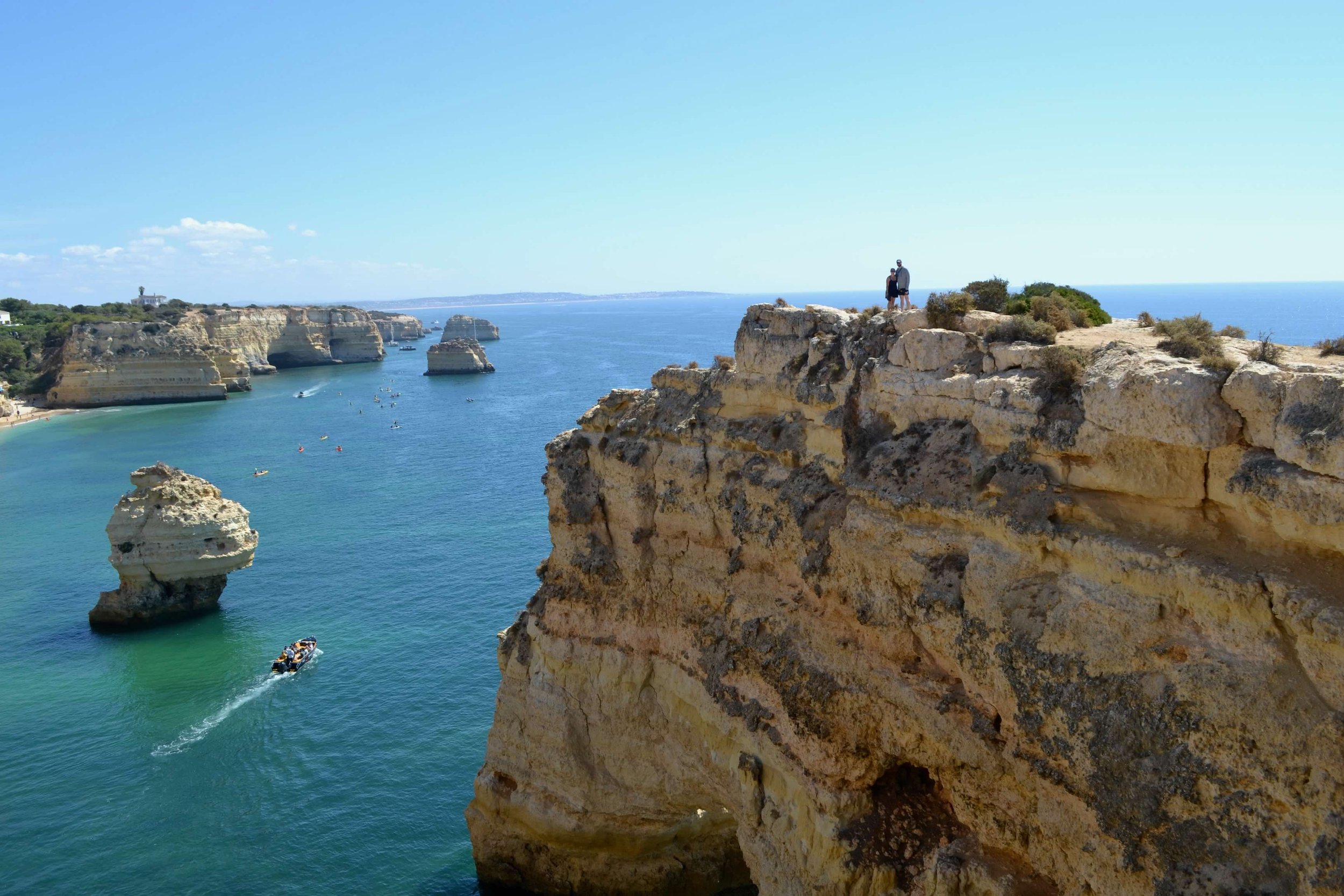
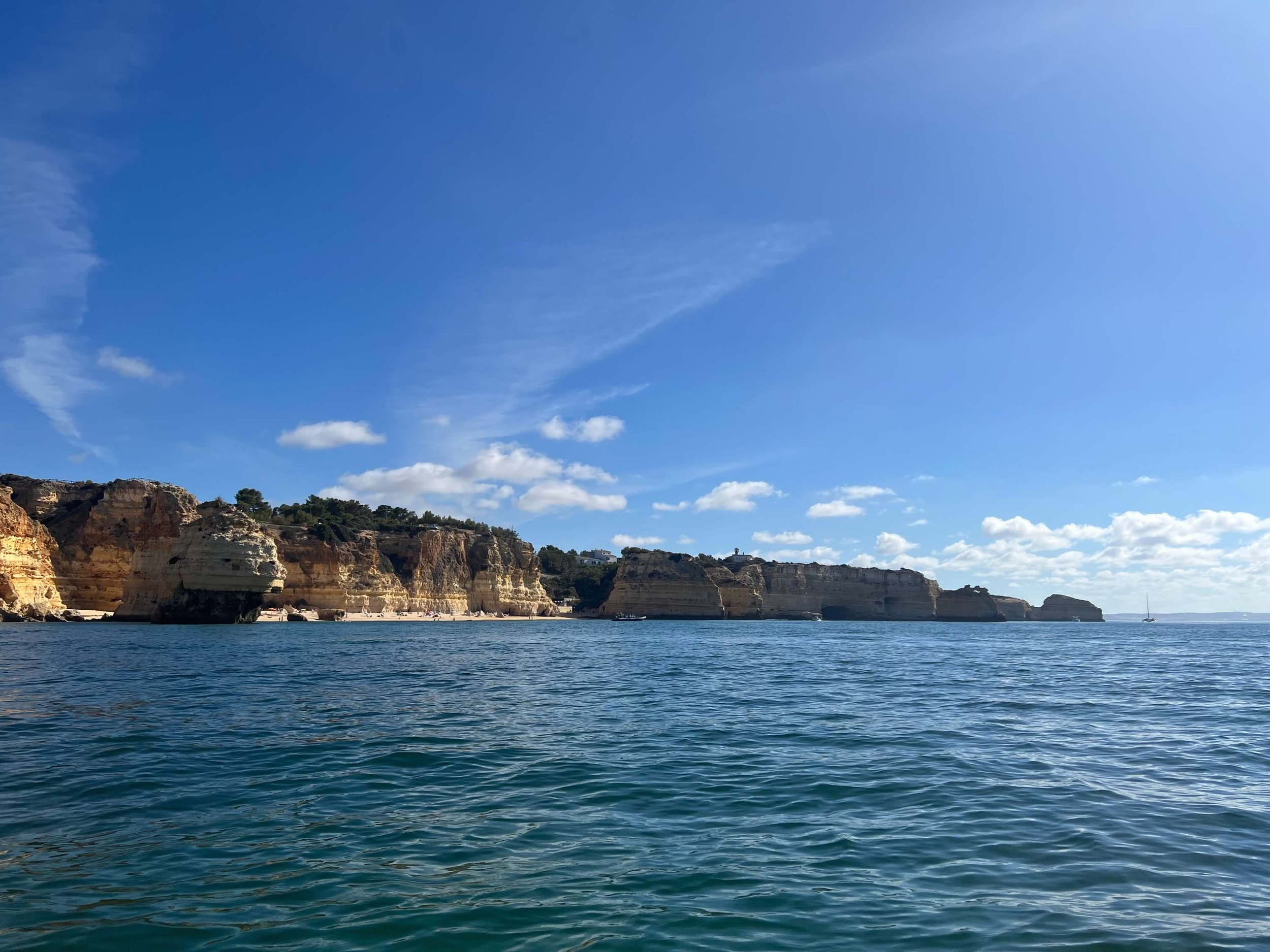
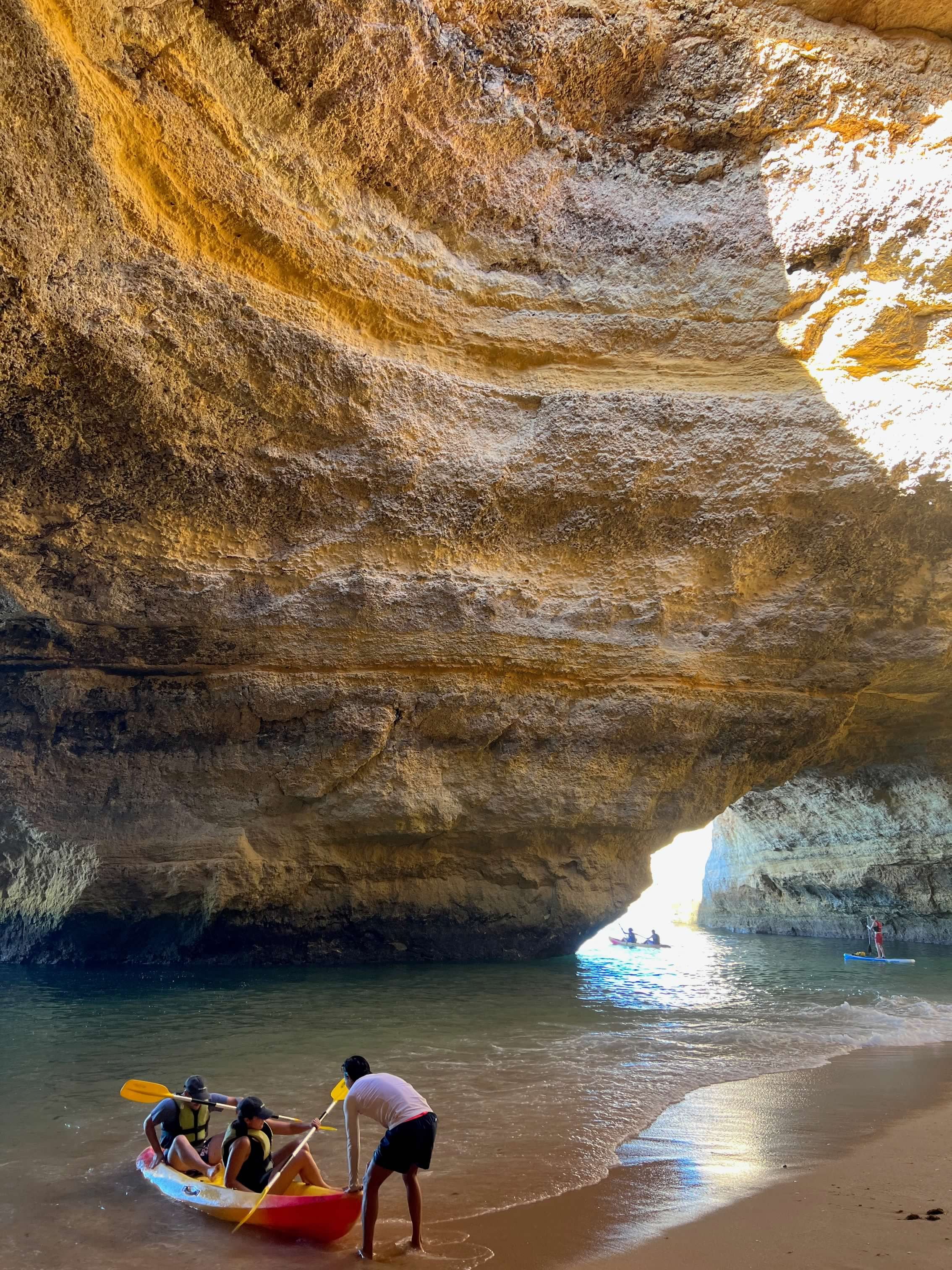
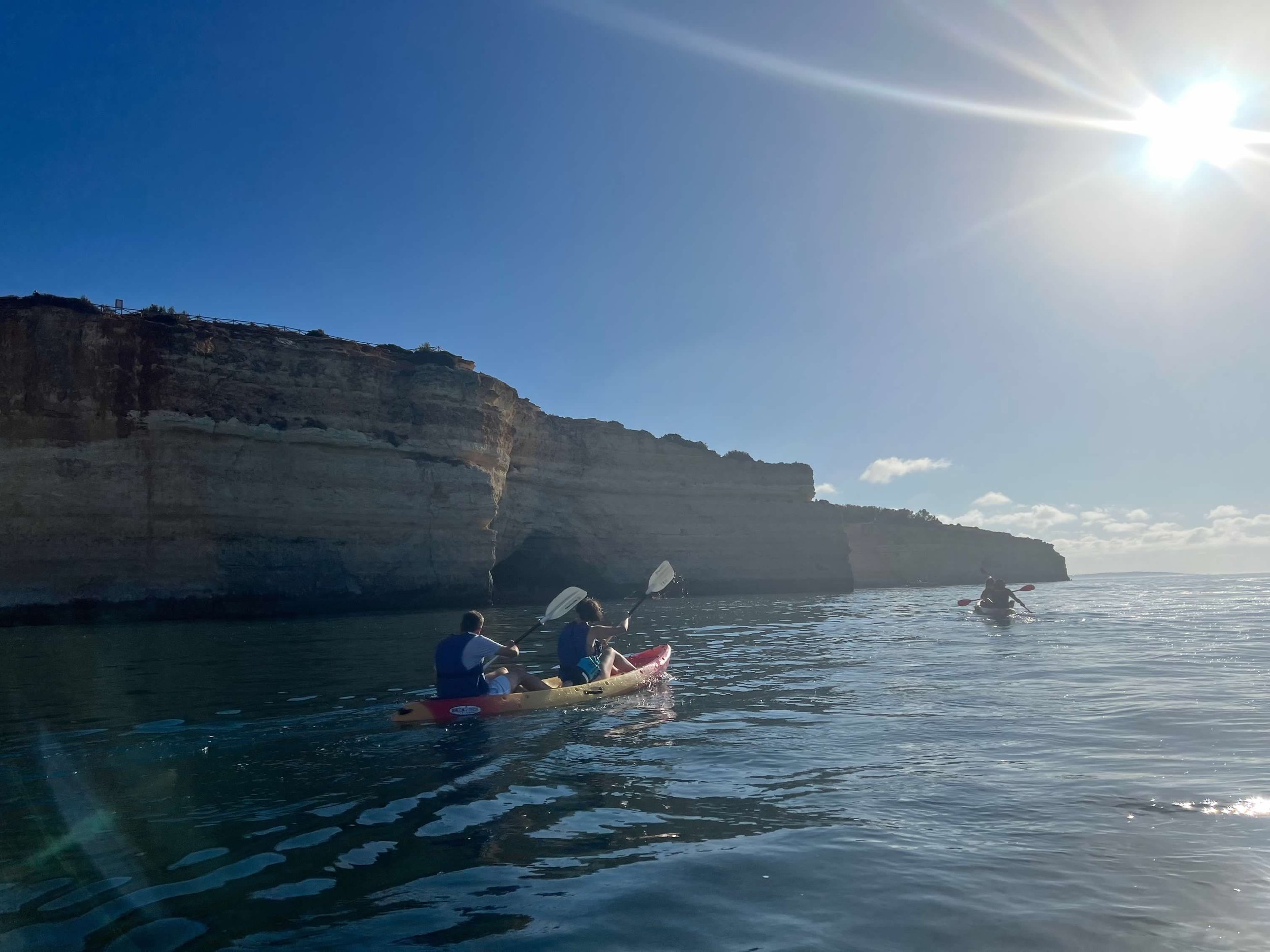

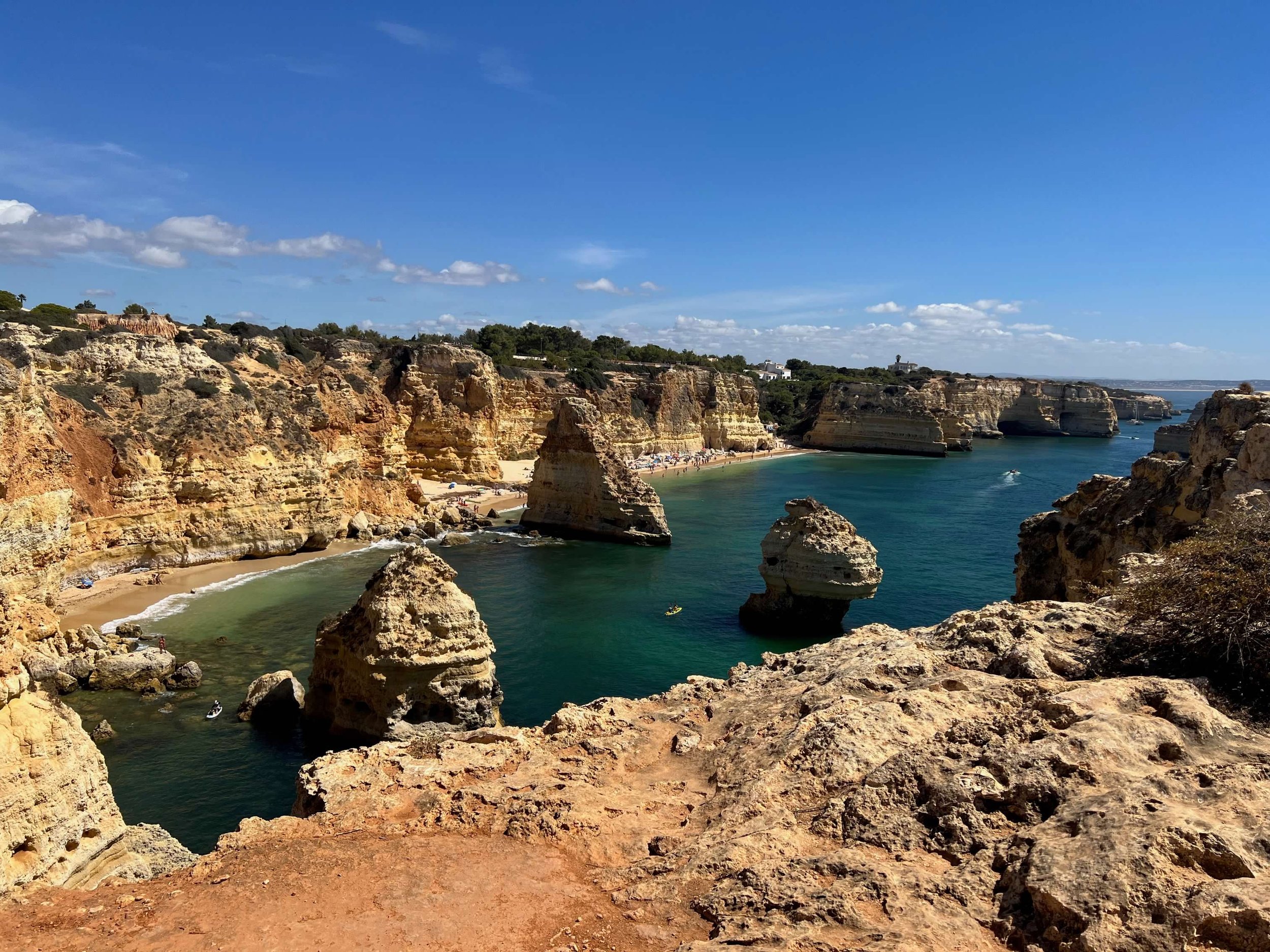
Portugal Highlight #2
Explore Lisbon by foot (and by tram, and by water)
Most travelers will first experience Portugal by landing in Lisbon, the capital city. The “City of Seven Hills” (a moniker Lisbon shares with Rome) is not a misnomer—this hilly city is best traversed by foot, by tram, and by water… so as not to exhaust you on day 1.
While the city also has a metro system and public buses, the yellow trams are the most iconic and provide the best sights of Lisbon as you traverse the city. Some of the tram lines have long waits and cater exclusively to tourists wanting the best view as they ascend the city (pictured left), but the climb by foot offers just as impressive views (for considerably more effort).
A yellow tram is also how you’ll get to Belém for the famous Pastéis de Belém, known throughout the country as pastel de nata. Read more about this quintessentially Portuguese custard egg tart in the food section below.
Lisbon’s commuter trains can also be used to visit Sintra and Cascais, two popular day trips located a short distance from the city. Sintra is the home of the beautiful, brightly-painted National Palace of Pena, which once served as a summer retreat for the royal family. Likewise, Cascais was once a summer holiday destination for royals, and continues to be one for Portuguese and international tourists alike. I spent a day biking alongside the shoreline in this coastal city, admiring the ocean views and 19th-century beachfront villas.
We traveled in a group of 11, so we also chartered a boat to explore Lisbon’s coastline. We sailed west towards the Atlantic Ocean, admiring the Tower of Belém and swimming in the Tagus River. We ended by sailing directly past Lisbon’s famed Praça do Comércio, once the site of the royal palace, but after the earthquake of 1755, it was rebuilt as the city’s main square for commerce.

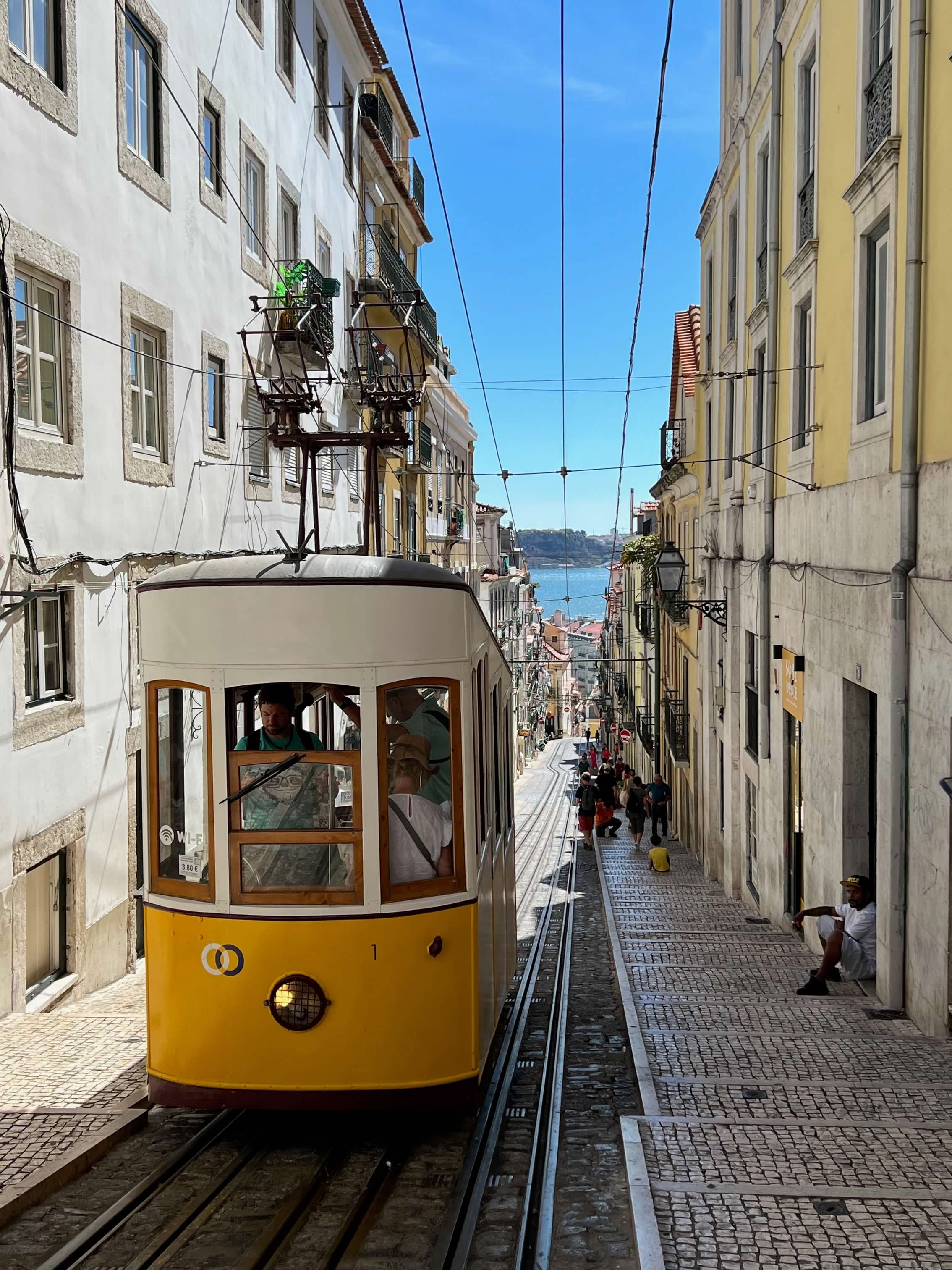
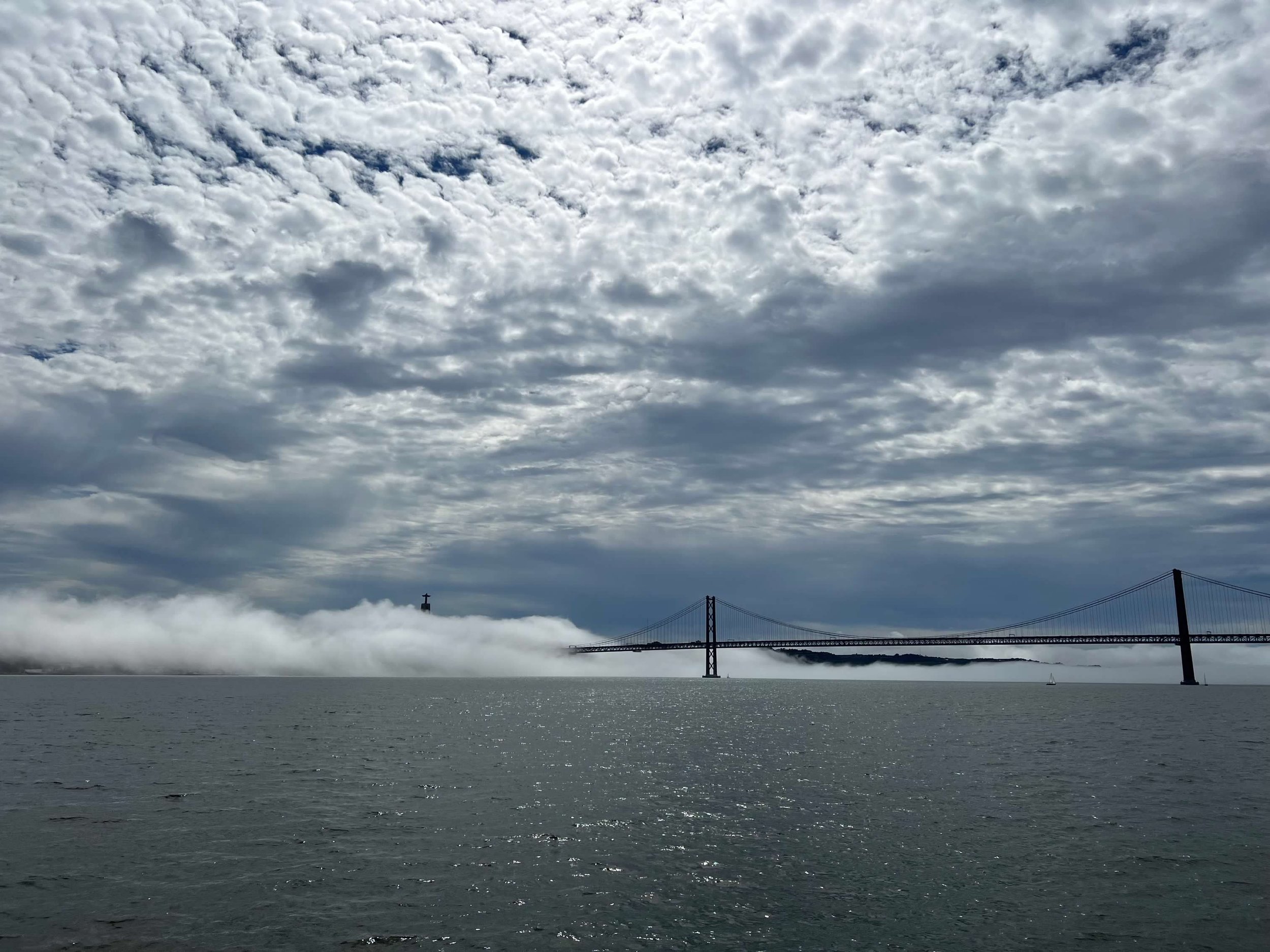
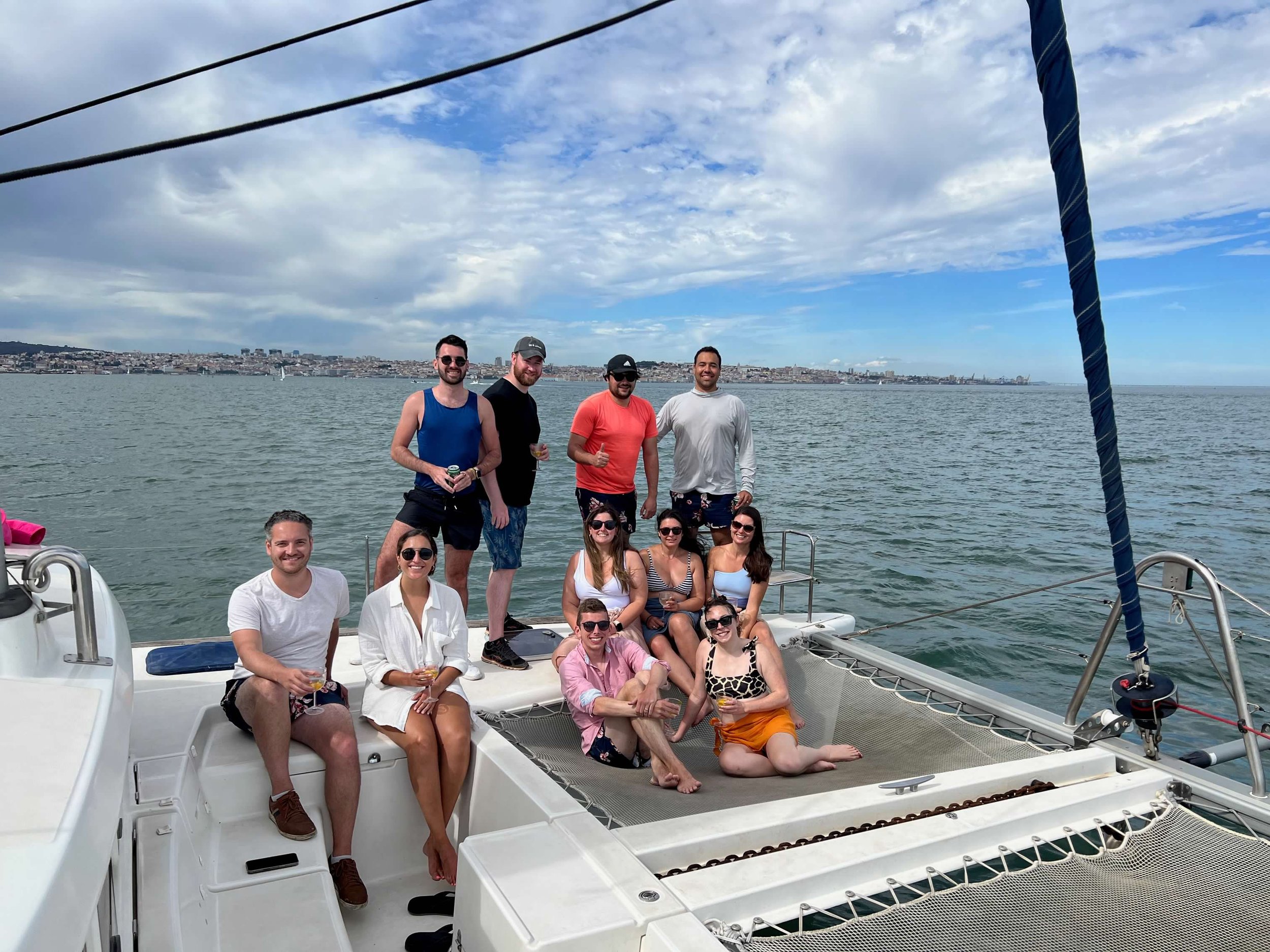
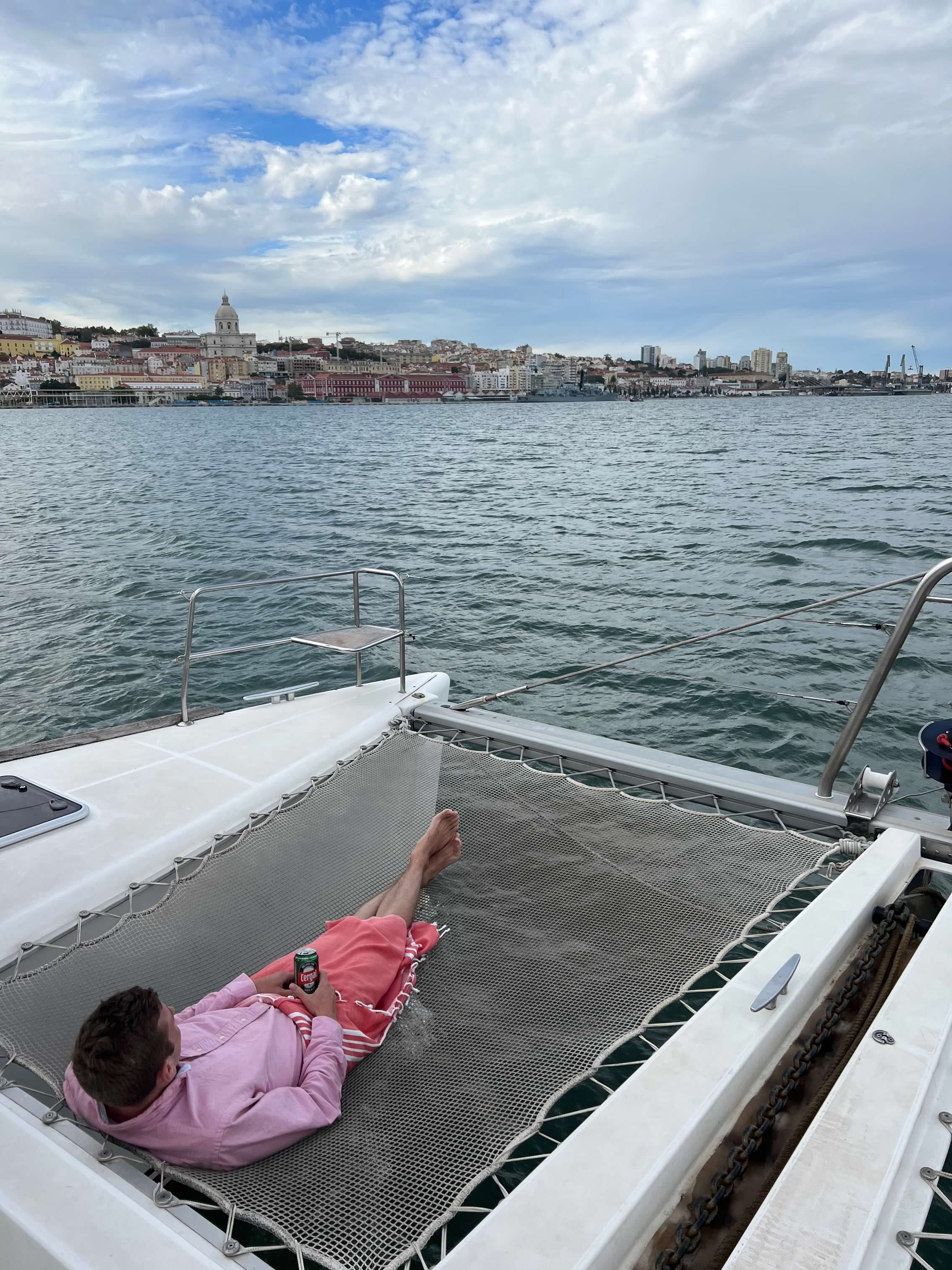
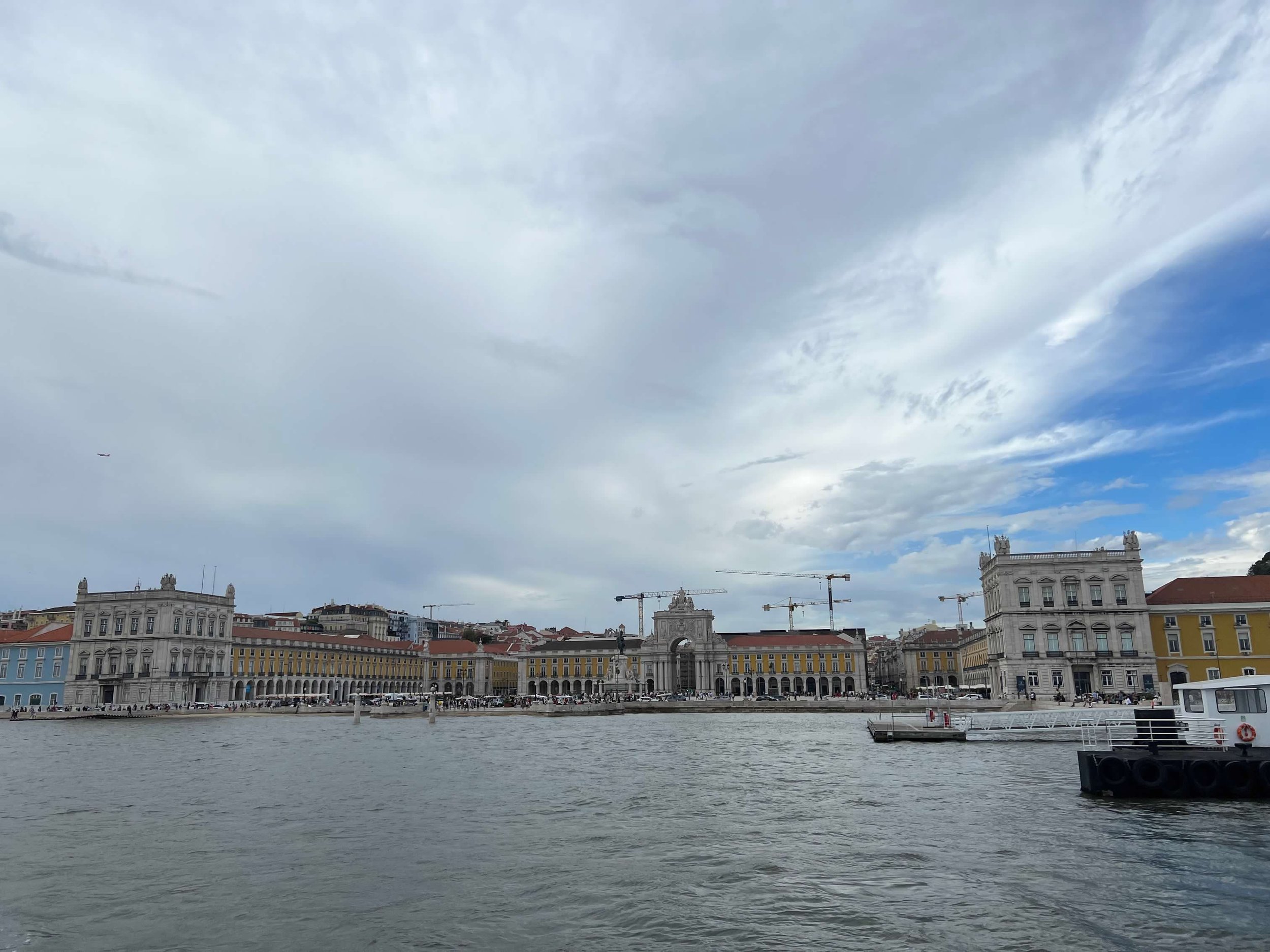
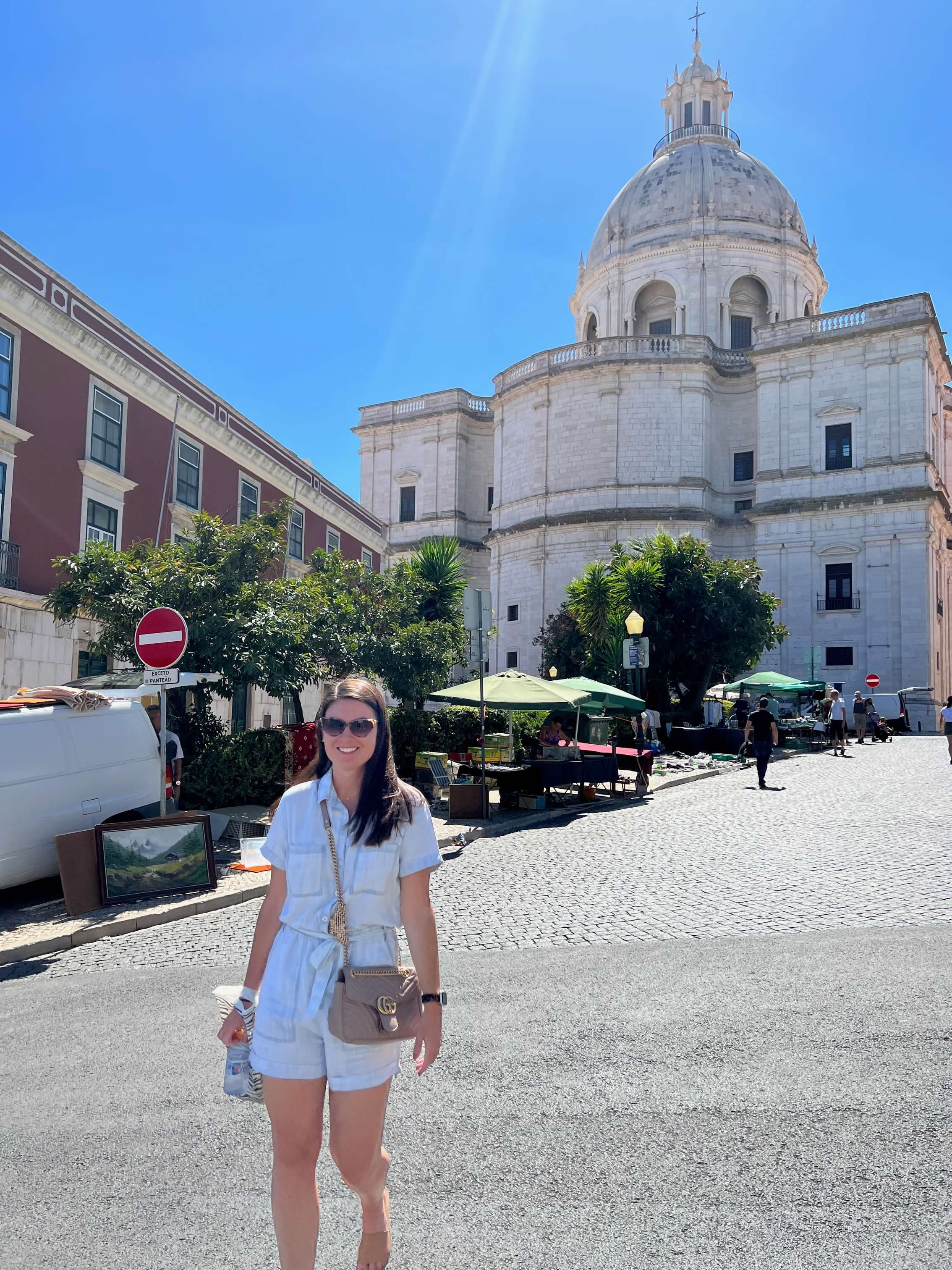
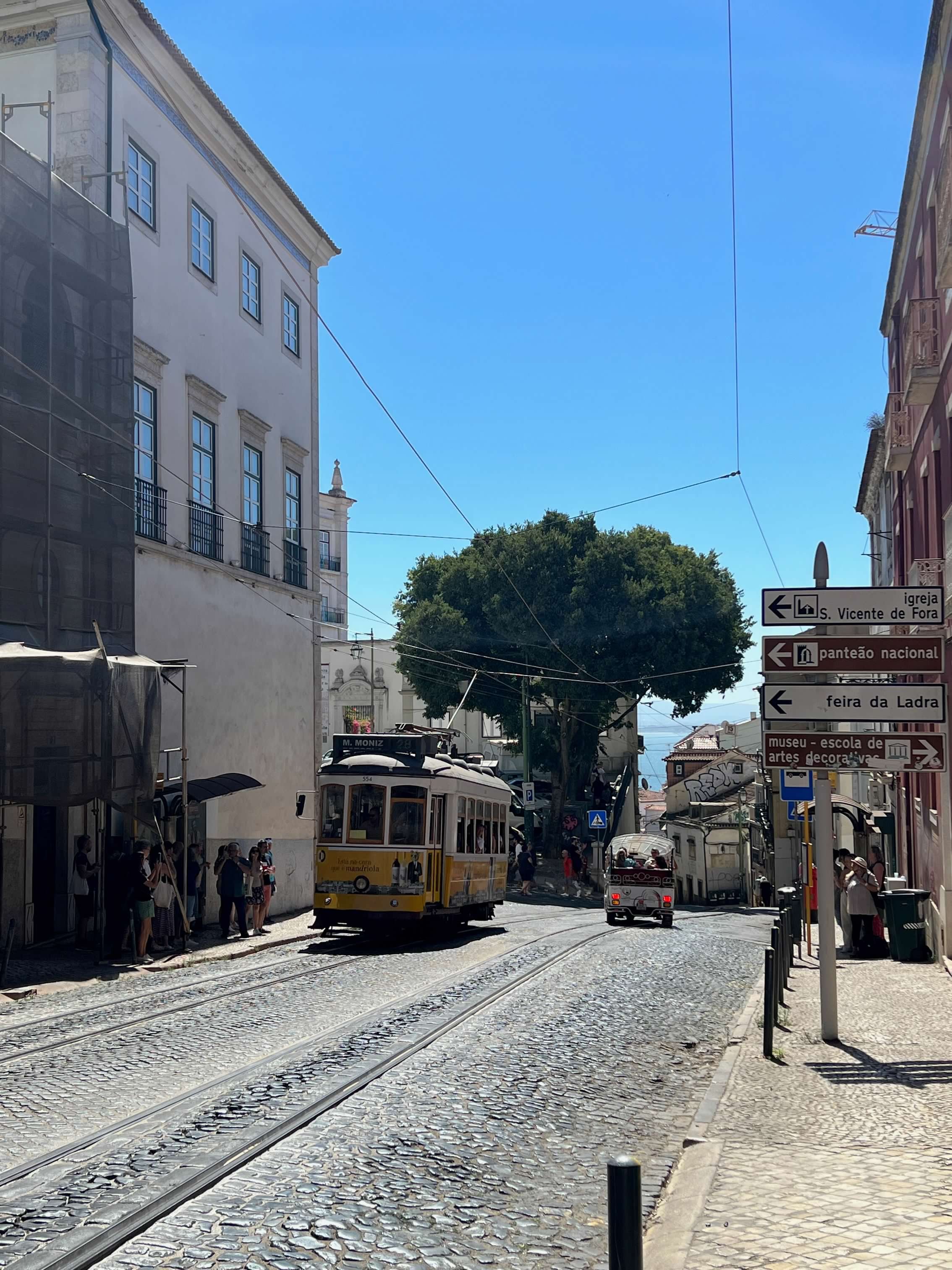
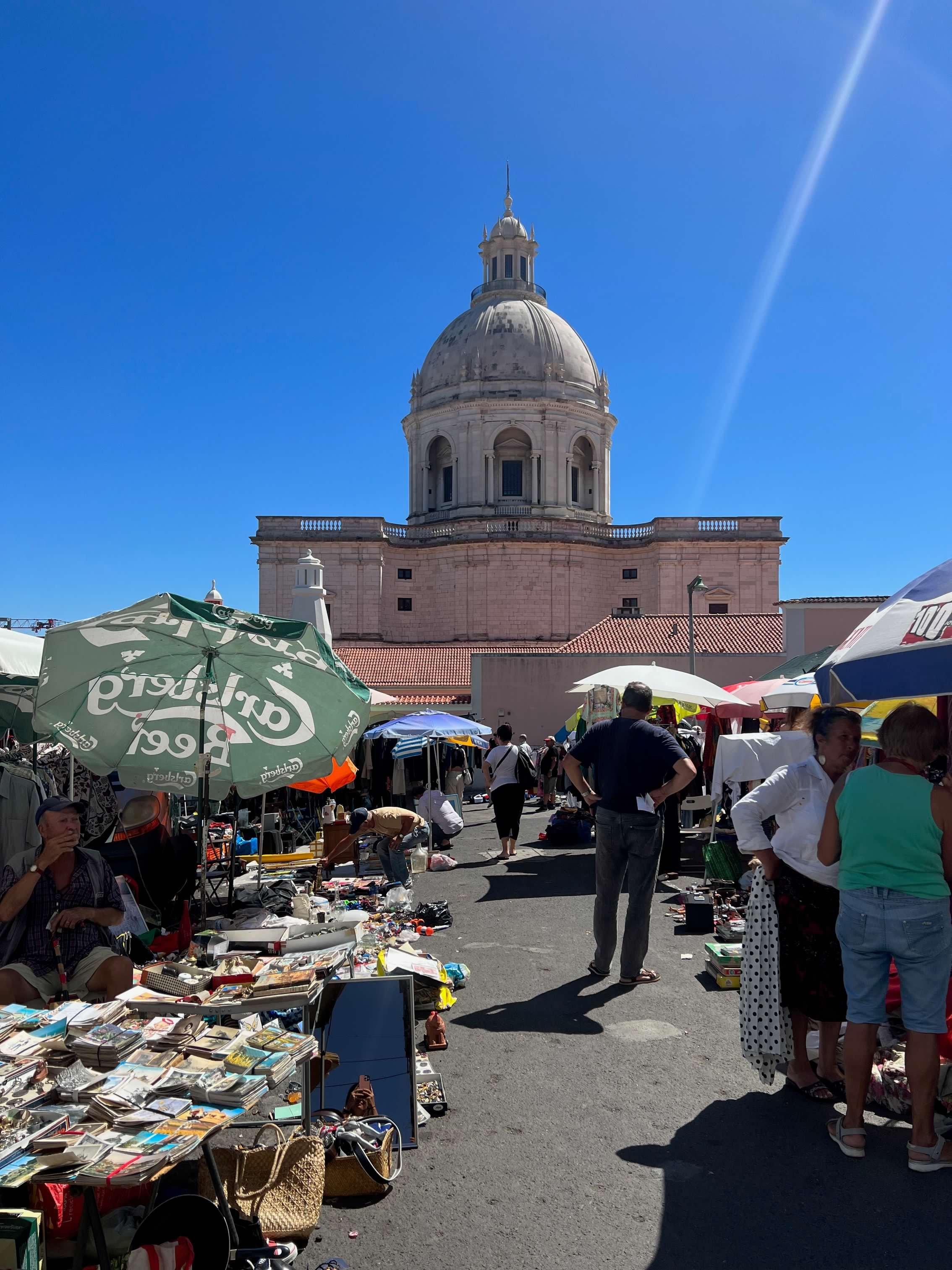
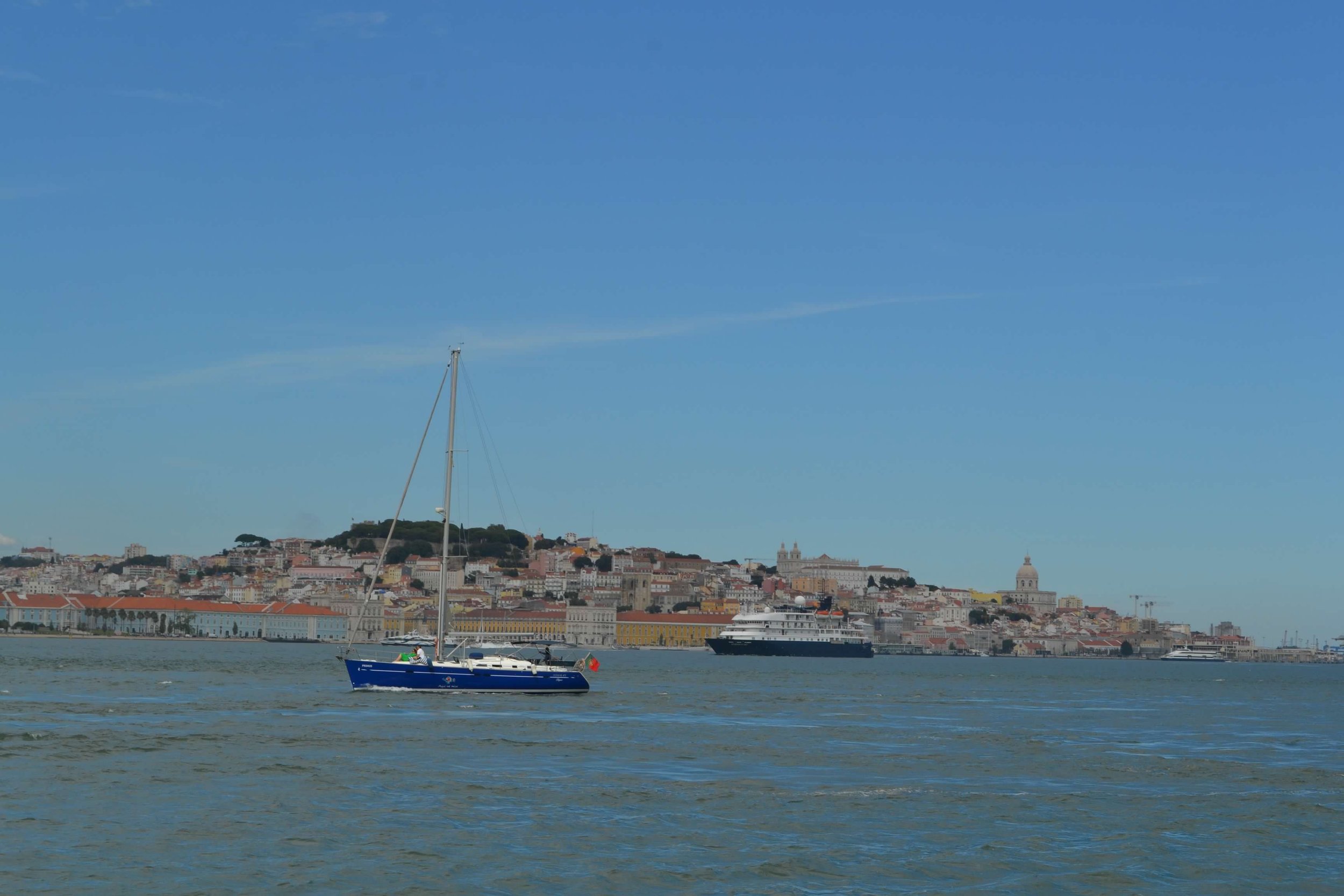
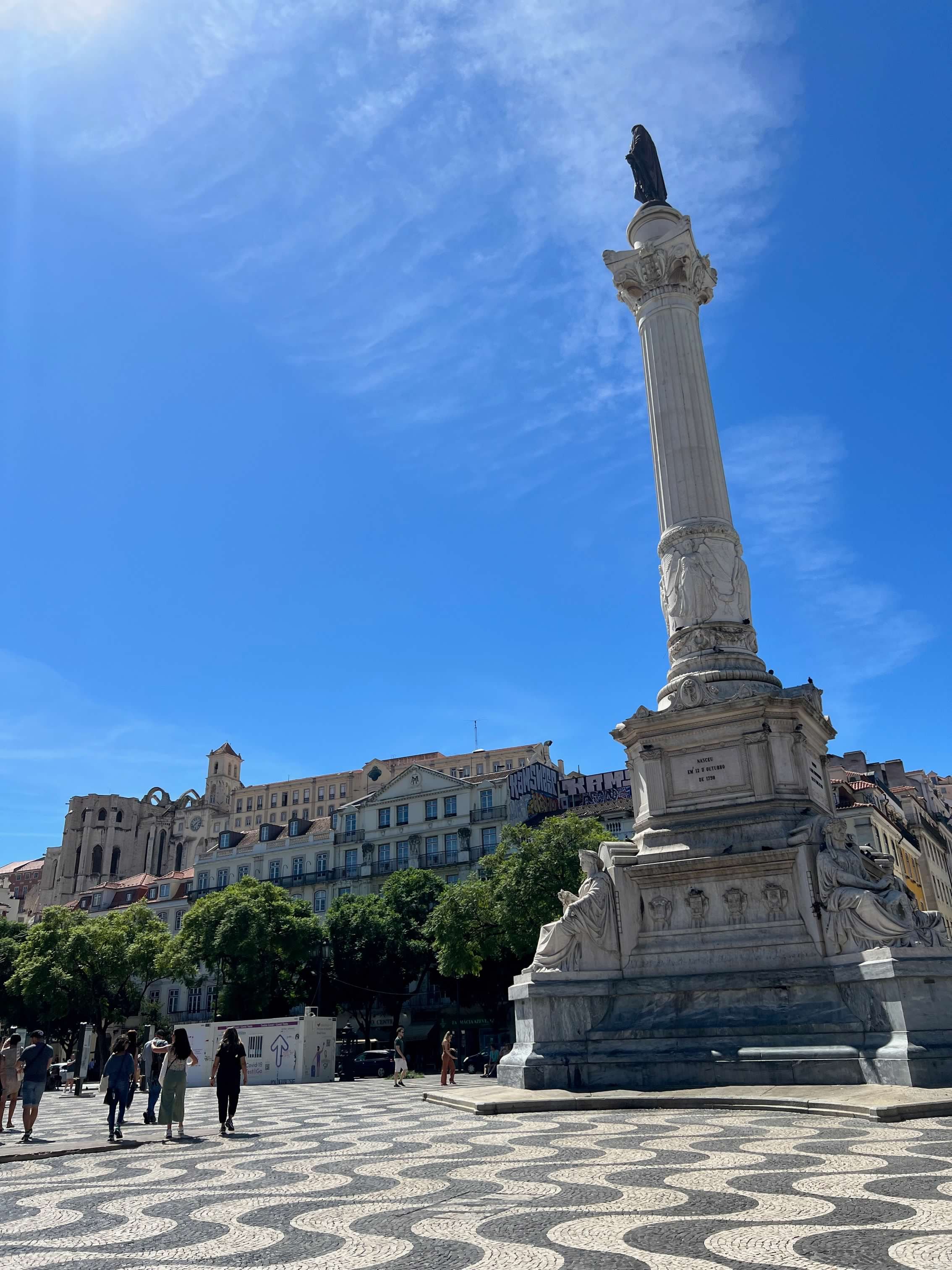
Portugal Highlight #3
Enjoy port wine from Porto’s wineries
It should come as no surprise that port wine is a major export of the city called Porto. The second largest city in Portugal, Porto was settled centuries ago by the Roman Empire, and this Douro River location is considered one of the oldest protected wine regions in the world.
A visit to a port house is one of the most recommended excursions in Porto, and we found ourselves making the short trek across the river to Vila Nova de Gaia. We visited in July, and sweltering heat and large crowds brought us to Taylor Fladgate, which offered a self-guided cellar tour that did not require advanced reservations. There are over 10 port houses located within walking distance of each other, and most require booking a tour well in advance, so research any specific places you want to visit before you travel across the river.
Taylor’s is one of the biggest producers of port wine, and our tour and tasting experience was a perfect reprieve from the high temperatures of the peak summer season. We walked through the cellar at our own pace, before entering a charming courtyard with peacocks wandering as we sampled various wines. The courtyard opened up to a beautiful view of the Douro River and Porto skyline, and we enjoyed bread and cheese with our port tasting.
This experience is not only for port wine enthusiasts: while I am not much of a fan of the sweet, heavy red wine, it was a great way to learn the history of the region while sampling the local specialties and taking in the sights.





Restaurant Highlights
Le Club Algarve (Albufeira)
This was one of our most spectacular meals while in the Algarve—both in terms of the meal itself and the stunning scenery. The restaurant doubles as a nightclub, but we arrived in time for a beautiful sunset and delicious sushi dinner. Check the restaurant’s availability before your trip, as the open-air restaurant only opens during the peak summer season.
O Pescador Benagil (Lagoa)
This small, intimate restaurant is one of the few dining options in Benagil, the starting point for many kayak excursions to the beautiful sea caves. The restaurant’s patio offers incredible views of the beach below, but the seafood selection is where this eatery really shines. The waiter comes to your table to share the catch of the day, then brings over a selection for you to choose your own fish. It’s worth making a reservation well in advance to secure a beachfront patio table—one table in particular offers the most incredible view of the beach below.
Páteo - Bairro do Avillez (Lisbon)
Five different spaces make up the impressive restaurant complex known as Bairro do Avillez. All are helmed by Chef José Avillez, whose other restaurants have been awarded multiple Michelin stars. We dined at the seafood-focused Páteo, a beautiful, glass-enclosed double-height patio. The menu offered an impressive selection of fish and seafood, though there was also standard Portuguese fare.
Time Out Market Lisboa (Lisbon)
One of eight international markets by the Time Out media brand, this food hall brings together some of the city’s buzziest restaurants and bars. You’ll find a wide selection of Portuguese and international dining, along with DJs and cultural events in this massive space.
What to Know Before You Go
Getting around:
The country has a well-established train system, which easily brings you between the Algarve district in the south, Lisbon, and Porto. It’s worth renting a car if you’ll be traveling around the beaches—there are a number of distinct towns that are well worth exploring, and Ubers can be hard to come by. Lisbon’s public transit opens include an extensive tram network, a metro system, and buses.
Where to stay:
Libson: The most popular neighborhoods to base yourself in Lisbon are Baixa, Chaido, Bairro Alto, and Alfama. Baixa is the most centrally located, just steps from the Praça do Comércio with easy access to public transit, shopping, and restaurants. Nearby Chaido is a charming, popular area for locals and tourists alike. You’ll find A Brasileira, a historic literary cafe, and Livraria Bertrand, the world’s oldest bookstore, on Chaido’s winding streets. Bairro Alto (the literal translation is “high neighborhood”) is the city’s party neighborhood, a hill-top area popular for the narrow streets with a seemingly endless bar scene. The party consistently spills out of the bars, so prepare for large crowds and loud noise late into the night. Alfama, located on the other side of Lisbon’s landmark Castelo de São Jorge, is a quaint, historic neighborhood—one of the few to survive the 1755 earthquake. The hilly area is full of charming, narrow cobblestone streets and is also the birthplace of fado, a traditional, haunting genre of Portuguese music.
Algarve: There are many charming towns in the Algarve, and where you decide to stay will be based on your activities—and what airport you fly into. I stayed at an Airbnb off Av. Infante Dom Henrique, a main street that spans the length of Albufeira. Albufeira has beautiful beaches, a lively downtown strip with bars and nightlife that caters to a younger crowd, and a charming old town with shops and restaurants. Faro is the capital of the southern Algarve region and has an airport with direct flights from Europe, though Americans will have to transfer or take a train from Lisbon.
Porto: The riverfront neighborhood of Ribeira is a great place to stay for nightlife and historic sights. The adjacent Baixa neighborhood is also a great option for first-time tourists, as sights including the elaborately tiled Igreja do Carmo and the city’s famed Livraria Lello (just look at the staircase within the bookshop!) are located here.
What to eat:
Pastel de nata, a Portuguese egg custard tart, is an acceptable treat any time of day. The most famous tarts come from Pastéis de Belém, located in the city of Belém, just a short tram ride from Lisbon. Between the impressive Gothic monastery, the waterfront 16th-century tower, and the infamous pastries, Belém is well worth a day trip. Be sure to factor in some time to stand in line—Pastéis de Belém caters to tourists from around the world, though the crowd moves quickly and you’ll soon be seated. The menu includes everything from coffee and tea to savory sandwiches and the renowned sweets, so come hungry.
Depending on where you visit in Portugal, ginja (or ginjinha) and port wine are regional specialties. Ginja is a cherry liqueur that can be found throughout Portugal, though I was first introduced to it while hiking up the mountain to Sintra’s 19th-century palace. Various shops along the way would offer ginja in chocolate shot glasses, making the steep trek up the hillside much more enjoyable. Port wine is named after the northern Portuguese city, with over 10 Port houses operating just across the Douro River. I visited Taylor Fladgate, one of the oldest port producers in Portugal, established in 1692. The impressive cellars, meandering peacocks, and charming tasting room overlooking the Douro River made this an incredible experience (even for those who aren’t big fans of port wine!).
When to visit:
Portugal boasts a Mediterranean climate, with warm, sunny summers and temperate, cool winters. The summer season is the most popular time to visit, so expect large crowds and (often) sweltering heat. The shoulder seasons are a great time to visit. I visited the Algarve and Lisbon in early September, and we had warm temperatures and beach weather with far fewer crowds. I also visited Lisbon in March and found cool temperatures in the 50s-60s, but plenty of sunshine which allowed for ample outdoor activities.


